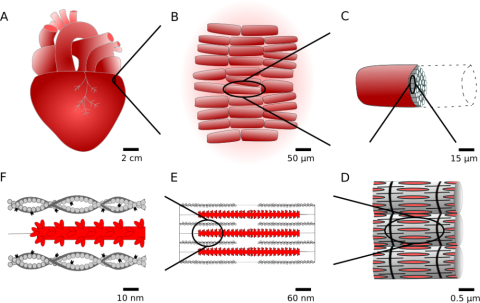Scientific Computing
Supercomputers are enabling tools such as mathematical models and computer simulation to transform scientists’ understanding of systems and processes – from particle physics to human physiology.
Scientific Computing at Simula is focused on developing mathematical models, software tools, and computer simulations to build fundamental knowledge in a variety of research fields. This knowledge is used to address obstacles faced by society, including human health challenges such as heart disease and neurodegeneration. High-performance computing allows researchers to execute accurate and detailed simulations at high speed.
Our researchers develop efficient and user-friendly tools that will make supercomputing more accessible and flexible for researchers in a range of areas, with a particular focus on applications in biomedical science.
“An essential part of scientific computing is to describe reality with mathematical models. At Simula, we focus on theoretical foundations as well as applications of these models to understand the human body.”
Departments
Focus areas
Within Scientific Computing, the work is focused on advanced computational methods – from their mathematical foundations through to their application – to investigate complex physiological phenomena and medical conditions. A key interest is modelling processes and conditions of the heart and brain, including heart failure, stroke, and dementia.
Developing robust solvers
Modelling complex phenomena means dealing with equations with many millions of unknowns, which cannot be solved analytically. One of our key focus areas is the theoretical side of modelling: we develop basic, flexible software components for creating partial differential equation (PDE) solvers for modelling both physiological processes and broader application.
Modelling processes in the human body
We apply our theoretical knowledge in developing computational middleware to model physical processes within the human body, based upon the finite element software suite FEniCS. Our focus here is on understanding processes such as electrophysiology, heart mechanics and the flow of fluids within and between different types of tissue. We also investigate tissue interaction problems, such as aneurysm formation and rupture, malformations and cyst formation in the spinal cord, and the modelling of the mitral valve and its interaction with blood flow.
For example, researchers in Scientific Computing at Simula have recently developed a ground-breaking simulation pipeline that can model patient-specific brain geometries. The Surface Volume Meshing Toolkit (SVMTK) can transform an MR image directly into a model that is customised for individual patients. SVMTK not only allows researchers to gain new insights into physiological processes relating to fluid flow in the brain but also provides a non-invasive method for diagnosing hydrocephalus – the build up of fluid within the brain, which can lead to brain damage and even death.
Developing tools for interactive computing & reproducible science workflows
For PDE and machine-learning models to be trusted, reproducibility is vital. Researchers often struggle to reproduce another scientist's work because they cannot translate a paper into code with similar results or run an author's code. We develop tools to help researchers achieve more reproducible and re-usable results and outputs, notably through the use of infrastructure such as Jupyter Notebook and Binder.
Key partners
A key research focus within Scientific Computing is modelling in biomedical science, with international partnerships. From Oslo University Hospital, University of Oslo, UC San Diego to University of Oxford, UC Berkeley, and Inria.






Contract research opportunities in Scientific Computing
Our research specialises in projects requiring analysis of partial differential equations, computational mechanics, artificial intelligence, and effective and reproducible science. We collaborate alongside medical and mathematical experts in joint research projects and help external customers with ICT, programming and fluid mechanics related problems. Our experience also extends beyond this to a range of applications such as upscaling technology for aquaculture.
Selected collaborative projects
- FutureReady: a tool based on machine learning models that can predict the likelihood of a telemarketer making a sale based on information that is known prior to a call.
- IsDeCa: a novel technology that is used to mix fish food for the salmon farming industry. The goal of the project, led by Ard Innovation and the Norwegian University of Life Sciences (NMBU), was to advance patented high-tech mixing technology from pilot scale to an industrial scale. Simula researchers played a pivotal role in computational verification of experimental results that are used to upscale prototypes for industrial use.
- Developing open-source multi-phyiscs software: Together with agricultural technology company Kilter, we are working to develop and trial open-source software to optimise precision agriculture machinery.
I am truly impressed with the workflow, pace and results. The correlation between simulations and lab experiments is striking. The physical insight that SRL has provided has sped up design optimisation significantly.
Anders Brevik, CEO of Kilter




